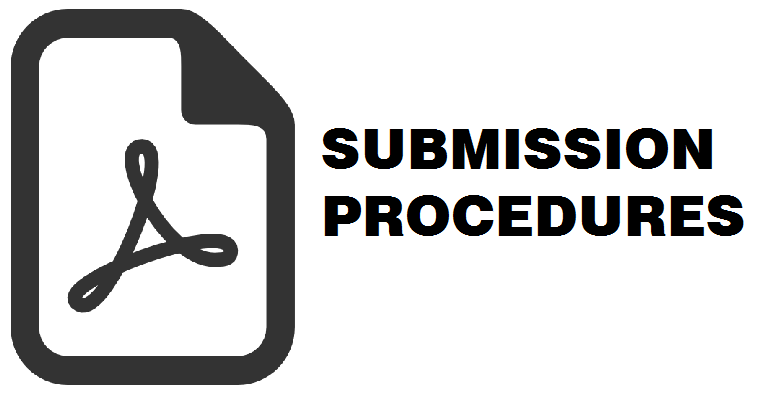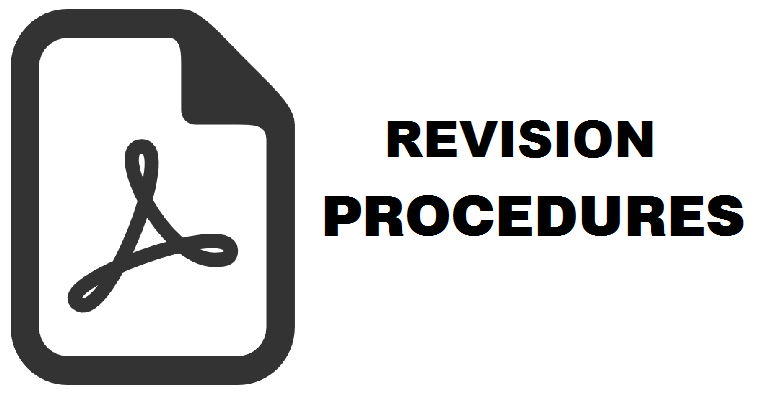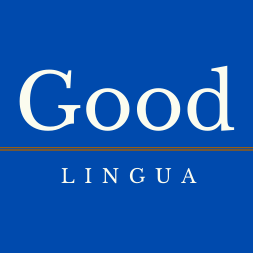Disparity Mapping of Rural-Urban High School Teachers' TPACK Level
Rima Meilita Sari(1), Faiz Urfan(2*), Tengku Muhammad Sahudra(3), Ridhwan Ridhwan(4)
(1) Geography Education Study Program, Universitas Samudra, Indonesia
(2) Geography Education Study Program, Universitas Samudra, Indonesia
(3) Geography Education Study Program, Universitas Samudra, Indonesia
(4) Geography Education Study Program, STKIP Al Washliyah, Indonesia
(*) Corresponding Author
Abstract
This study examines the disparity in Technological Pedagogical Content Knowledge (TPACK) levels among high school teachers, distinguishing between rural and urban settings within two regions on the Aceh East Coast, specifically Langsa City and Aceh Tamiang Regency. The research encompasses 560 teachers from both private and public high schools in Langsa City, an urban area, and Aceh Tamiang Regency, a rural area. Data is acquired through the test and questionnaire to capture teachers' TPACK levels. The data analysis used in this research is Global Moran's I and Anselin Local Moran's I to visualize patterns and disparities in teachers' TPACK levels. The research results reveal a significant disparity between urban (Langsa City) and rural (Aceh Tamiang Regency) areas. Langsa City has a random TPACK distribution pattern (Global Moran's I Index = 0,02438), while Aceh Tamiang Regency has a clustered pattern (Global Moran's I Index = 0,17018). This indicates that Aceh Tamiang Regency has higher disparities among high school teachers in TPACK levels compared to Langsa City. Then, Langsa City has better equality in the quality of high school teachers. Furthermore, analysis from Anselin's Local Moran's I reveals a concentration of teachers with the highest TPACK levels in the municipal district and teachers with low TPACK levels in the peripheral area. It can be found in both regions' hot and cold spots.
Received: 2024-06-13 Revised: 2024-07-03 Accepted: 2025-06-26 Published: 2025-07-30
Keywords
Full Text:
PDFReferences
Anselin, L. (2019). An Introduction to Spatial Data Science with GeoDa: Volume 2 – Clustering Spatial Data (1st Edition). CRC Press. https://doi.org/10.1201/9781032713175
Bakar, A. Y. A. (2022). The Equal And Equitable Provision Of Primary School Education In Malaysia: Issues And Challenges. Journal of Positive School Psychology, 6(7), 2476–2485.
Bednarz, S. W., Chalkley, B., Fletcher, S., Hay, I., Heron, E. Le, Mohan, A., & Trafford, J. (2008). Community Engagement for Student Learning in Geography. Journal of Geography in Higher Education, 32(1), 87–100. https://doi.org/10.1080/03098260701731553
Burger, R. (2011). School Effectiveness in Zambia: The Origins of Differences between Rural and Urban Outcomes. Development Southern Africa, 28(2), 157–176. https://doi.org/10.1080/0376835X.2011.570064
Canales, A., & Maldonado, L. (2018). Teacher quality and student achievement in Chile: Linking teachers' contribution and observable characteristics. International Journal of Educational Development, 60, 33–50. https://doi.org/10.1016/j.ijedudev.2017.09.009
Corbett, M., & Donehower, K. (2017). Rural Literacies: Toward Social Cartography. Journal of Research in Rural Education, 32(5).
Corbett, M., & Gereluk, D. (2020). Rural teacher education: Connecting land and people. In Rural Teacher Education: Connecting Land and People. Springer Singapore. https://doi.org/10.1007/978-981-15-2560-5
Ezeudu, S. A., & Ojih, L. U. (2014). Competency Gaps among Geography Teachers in the Teaching of Geography Mapwork in Secondary Schools in Kogi State. Journal of Education and Practice, 5(25). www.iiste.org
Goh, D., & Kale, U. (2016). The urban–rural gap: project-based learning with Web 2.0 among West Virginian teachers. Technology, Pedagogy and Education, 25(3), 355–376. https://doi.org/10.1080/1475939X.2015.1051490
Goradia, T. (2018). Role of Educational Technologies Utilizing the TPACK Framework and 21st Century Pedagogies: Academics' Perspectives. IAFOR Journal of Education, 6(3), 43–61.
Hamid, M. A., Nurtanto, M., & Fawaid, M. (2018). The analysis of learning implementation plan in vocational subjects based on 2013 Curriculum. INVOTEC, 14(1), 17–21.
Irawadi, A., Juanda, B., & Munibah, K. (2020). Analisis Kemiskinan Spasial dan Kaitannya dengan Sertifikasi dan Penggunaan Lahan Pertanian di Kabupaten Mamuju (Analysis of Spatial Poverty and Its Relation to Certification and Agricultural Land Use in Mamuju Regency). TATALOKA, 22(1), 70–82. https://doi.org/10.14710/tataloka.22.1.70-82
Ishii, Y., & Meke, E. S. (2022). An Analysis of Rural-Urban Learning Performance Inequality in Malawi Primary Education. East African Journal of Education Studies, 5(2), 194–211. https://doi.org/10.37284/eajes.5.2.716
Jaipal-Jamani, K., & Figg, C. (2015). The framework of TPACK-in-practice: Designing content-centric technology professional learning contexts to develop teacher knowledge of technology-enhanced teaching (TPACK). In Technological pedagogical content knowledge (pp. 137–163). Springer.
Lee, K., Courtney, M., McGlashan, A., Neveldsen, P., & Toso, M. (2020). Initial teacher education students' perceptions of technology and technology education in New Zealand. International Journal of Technology and Design Education, 30(3), 437–458. https://doi.org/10.1007/s10798-019-09516-6
Lounkaew, K. (2013). Explaining urban-rural differences in educational achievement in Thailand: Evidence from PISA literacy data. Economics of Education Review, 37, 213–225. https://doi.org/10.1016/j.econedurev.2013.09.003
Marliani, R. (2021). Identifikasi Autokorelasi Spasial Tingkat Pengangguran Terbuka di Kalimantan Timur (dentification of Spatial Autocorrelation of Open Unemployment Rate in East Kalimantan). BESTARI: Buletin Statistikan Dan Aplikasi Terkini, 2(2021).
McDaris, J. R., Iverson, E. R., Manduca, C. A., & Huyck Orr, C. (2019). Teach the Earth: Making the connection between research and practice in broadening participation. Journal of Geoscience Education, 0(0), 1–13. https://doi.org/10.1080/10899995.2019.1616272
Melero, J., Hernández‐Leo, D., Sun, J., Santos, P., & Blat, J. (2015). How Was the Activity? A Visualization Support for A Case of Location‐Based Learning Design. British Journal of Educational Technology, 46(2), 317–329. https://doi.org/10.1111/bjet.12238
Mishra, P. (2019). Considering Contextual Knowledge: The TPACK Diagram Gets an Upgrade. Journal of Digital Learning in Teacher Education, 35(2), 76–78. https://doi.org/10.1080/21532974.2019.1588611
Ningrum, A. S., & Ginting, K. B. (2020). Strategi penanganan banjir berbasis mitigasi bencana pada kawasan rawan bencana banjir di Daerah Aliran Sungai Seulalah Kota Langsa (Flood management strategy based on disaster mitigation in flood-prone areas in the Seulalah River Basin, Langsa City). Jurnal GEOSEE (Geography Science Education Explored) , 1(1). https://jurnal.unsil.ac.id/index.php/geosee/article/view/1919
Ningsih, M. P. (2019). Implementasi TPACK Framework dalam Workshop SSP Program PPG untuk Guru Geografi Profesional. Jurnal Geografi: Geografi Dan Pengajarannya, 17(2), 25. https://doi.org/10.26740/jggp.v17n2.p25-38
Nurmalasari, N. (2023). Strategi Kepala Sekolah dalam Meningkatkan Kinerja Guru MIN 4 Aceh Tamiang (School Principal’s Strategy for Improving Teacher Performance at MIN 4 Aceh Tamiang). Khidmat, 1(1), 23–28.
Othman, M., & Muijs, D. (2013). Educational quality differences in a middle-income country: the urban-rural gap in Malaysian primary schools. School Effectiveness and School Improvement, 24(1), 1–18. https://doi.org/10.1080/09243453.2012.691425
Padmavathi, M. (2017). Preparing Teachers for Technology Based Teaching-Learning Using TPACK. Journal on School Educational Technology, 12(3), 1–9.
Rohmani, N. (2021). Pemetaan Kompetensi Pedagogik Guru dalam Keterampilan Teknologi Informasi dan Komputer (Mapping Teacher Pedagogical Competencies in Information Technology and Computer Skills). Tatar Pasundan: Jurnal Diklat Keagamaan, 15(1), 72–78. https://doi.org/10.38075/tp.v15i1.188
Sahudra, T. M., Fadlia, F., & Firdaus, C. R. (2022). Pelatihan Penulisan Karya Ilmiah untuk Peningkatan Profesionalisme Guru (Scientific Writing Training to Increase Teacher Professionalism). Majalah Ilmiah UPI YPTK, 97–102.
Santos-García, F., Valdivieso, K. D., Rienow, A., & Gairín, J. (2021a). Urban–Rural Gradients Predict Educational Gaps: Evidence from a Machine Learning Approach Involving Academic Performance and Impervious Surfaces in Ecuador. ISPRS International Journal of Geo-Information, 10(12), 830. https://doi.org/10.3390/ijgi10120830
Santos-García, F., Valdivieso, K. D., Rienow, A., & Gairín, J. (2021b). Urban–Rural Gradients Predict Educational Gaps: Evidence from a Machine Learning Approach Involving Academic Performance and Impervious Surfaces in Ecuador. ISPRS International Journal of Geo-Information, 10(12). https://doi.org/10.3390/ijgi10120830
Saubern, R., Henderson, M., Heinrich, E., & Redmond, P. (2020). TPACK–time to reboot? Australasian Journal of Educational Technology, 36(3), 1–9.
Scardamalia, M., Bereiter, C., McLean, R. S., Swallow, J., & Woodruff, E. (1989). Computer-supported learning environments and problem-solving. Berlin: Springer-Verlag.
Septyana, E., Setiawan, A., & Susanto, B. (2021). Analisis Indeks Pembangunan Manusia Provinsi-Provinsi di Indonesia Menggunakan Indeks Baru Berdasarkan Metode Resampling. Jurnal Sains Dan Edukasi Sains, 4(1), 9–16. https://doi.org/10.24246/juses.v4i1p9-16
Sintiya, D., Nurmasyitah, N., & Junaidi, T. (2019). Kesiapan Guru IPA SMP Negeri 3 Langsa terhadap Pelaksanaan Kurikulum 2013 Tahun Ajaran 2018/2019 (Readiness of Science Teachers at SMP Negeri 3 Langsa towards the Implementation of the 2013 Curriculum for the 2018/2019 Academic Year). GRAVITASI: Jurnal Pendidikan Fisika Dan Sains, 2(02), 7–13.
Sumida, S., & Kawata, K. (2021). An Analysis of The Learning Performance Gap Between Urban and Rural Areas in Sub-Saharan Africa. South African Journal of Education, 41(2), 1–17. https://doi.org/10.15700/saje.v41n2a1779
Susanto, R. (2021). Pemetaan Kompetensi Pedagogik dalam Keterkaitan Dimensi Pengetahuan Pedagogik dan Profil Karakteristik Awal (Mapping Pedagogical Competencies in the Relationship between Pedagogical Knowledge Dimensions and Initial Characteristic Profiles). JPPI (Jurnal Penelitian Pendidikan Indonesia), 7(1), 164–171. https://doi.org/10.29210/020211167
Sutton, G., Mcleod, C., Fraser, S., & Corbett, M. (2017). Disrupting Perception: Mapping An Understanding Of Educational Attainment. Australian and International Journal of Rural Education, 27(3). http://www.abs.gov.au/ausstats/abs@.nsf/mf/6227.0
Taopan, L. L., & Drajati, N. A. (2020). TPACK Framework: Challenges and Opportunities in EFL Classrooms. Research and Innovation in Language Learning, 3(1), 1–22.
Tayyaba, S. (2012). Rural-urban gaps in academic achievement, schooling conditions, student, and teachers' characteristics in Pakistan. International Journal of Educational Management, 26(1), 6–26. https://doi.org/10.1108/09513541211194356
Trisnawati, D., & Khoirunurrofik, K. (2019). Inter-Provincial Spatial Linkages of Crime Pattern in Indonesia: Looking at Education and Economic Inequality Effects on Crime. Indonesian Journal of Geography, 51(2), 106. https://doi.org/10.22146/ijg.34026
Wilonoyudho, S. (2017). Urbanization and Regional Imbalances in Indonesia. Indonesian Journal of Geography, 49(2), 125. https://doi.org/10.22146/ijg.13039
Yakob, M., Sari, R. P., & Mustika, D. (2020). Pendampingan Penulisan Artikel Ilmiah dalam Membentuk Profesionalisme Guru SMA di Kabupaten Aceh Tamiang (Assistance in Writing Scientific Articles in Forming High School Teacher Professionalism in Aceh Tamiang Regency). Global Science Society: Jurnal Ilmiah Pengabdian Kepada Masyarakat, 2(1), 300–309.
Yani, A., & Mulyadi, A. (2022). Higher Order Thinking Skills (HOTS)-Oriented Learning in Geography Learning. Jurnal Pendidikan Ilmu Sosial, 31(1).
Zhang, Y. (2023). Research on the Gap Between Urban and Rural Teacher Resources Based on Data and Case Analysis. In Journal of Education, Humanities and Social Sciences EMSS (Vol. 2023).
Article Metrics
Refbacks
- There are currently no refbacks.
Copyright (c) 2025 Authors and Indonesian Journal of Geography

This work is licensed under a Creative Commons Attribution-NonCommercial 4.0 International License.
The Indonesian Journal of Geography (ISSN 2354-9114 (online), ISSN 0024-9521 (print)) is an international journal published by the Faculty of Geography, Universitas Gadjah Mada in collaboration with The Indonesian Geographers Association. The content of this website is licensed under a Creative Commons Attribution-ShareAlike 4.0 International License
Accredited Journal, Based on Decree of the Minister of Research, Technology and Higher Education, Republic of Indonesia Number 225/E/KPT/2022, Vol 54 No 1 the Year 2022 - Vol 58 No 2 the Year 2026 (accreditation certificate download)










